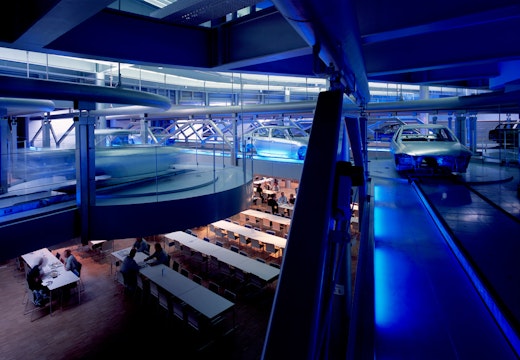Space for thought: why corporate labs could be back on business agenda
A new study by five economists suggests that global productivity has suffered amid a swing from company-led to university-led innovation. Is it time to bring back the corporate R&D lab?
Corporate labs hold a special place in the development of the modern workplace.
Places like the Bell Labs research facility in Murray Hill, New Jersey, which developed solar cells and transistors in a unique multi-disciplinary environment, or DuPont’s R&D unit, which significantly advanced the chemistry of material science, have achieved almost mythological status on account of the breakthrough innovations generated behind their closely guarded doors.
Bells Labs at Murray Hill was designed by Eero Saarinen in the late 1950s to house more than 6,000 engineers and researchers. It broke new ground in orchestrated collaboration: long-reaching corridors were designed for researchers from different disciplines to bump into each other. Other corporate R&D labs from that period can also boast a track record of success.
But over the past 60 years, the productive output of corporate labs has been on the wane while university-based research has expanded enormously. As five economists have pointed out in a new paper, ‘The Effect of Public Science on Corporate R&D’, there has been a significant swing from company-led to academic-led innovation.
Global productivity slowdown
According to the paper’s authors Ashish Arora, Sharon Belenzon, Larisa C. Cioaca, Lia Sheer and Hansen Zhang, this boom-time period in higher education has coincided with a global productivity slowdown. Commenting on the paper, The Economist explains how worker output per hour in the 1950s and 1960s grew by 4 per cent in developed economies whereas today productivity growth is at a laggard rate of less than one per cent; its verdict is that ‘universities’ blistering growth and the rich world’s stagnant productivity could be two sides of the same coin’.
There are policy frameworks which have helped engineer the switch from an old, big-business model of scientific innovation to a new, university-driven one. Tough anti-monopoly laws in the 1950s and 60s initially drove the growth of large corporate labs doing research in-house, because there were unable to acquire the intellectual property of rival firms. But when the rules on competition were relaxed in the 1970s and 80s, at the same time as the expansion of university research, company bosses became convinced that they didn’t need to invest in their own expensive R&D labs. They could outsource many aspects of innovation to the academic boffins.
Less inclined to innovate
Using a complex methodology, the paper’s authors have assessed the effects over time and reached a scathing judgement on scientific innovation conducted by publicly funded institutions, arguing that they ‘elicit little or no response from established corporations’ and therefore fail to move the dial generally on improving economic productivity. They further suggest that the sheer numbers of academic patents make big businesses less inclined to innovate themselves for fear of competition from university spinouts.
What will encourage a revival of the corporate lab, which is so rightly revered in the history of workplace design? Already there are signs of new life. Big pharma is leading the charge on keeping R&D inhouse, while also keeping tabs on university inventions. So is big tech, especially in relation to artificial intelligence. The automotive sector is scanning the horizon as autonomous and electric vehicles get set to transform our roads. In all of these areas, we can find excellent workplace design projects.
What will encourage a revival of the corporate lab, which is so rightly revered by designers?
But university research, a giant global business in itself, is unlikely to step aside or shrink as corporates rethink and invest more in R&D. The two big battalions of innovation may simply have to learn to coexist and collaborate more effectively in the future, with companies finding better ways to translate academic ideas for economic gain and public scientists working harder to understand what businesses might need. But then you don’t really need to PhD to work that one out.
Source: Ashish Arora, Sharon Belenzon, Larisa C. Cioaca, Lia Sheer and Hansen Zhang. 2023. ‘The Effect of Public Science on Corporate R&D’. National Bureau of Economic Research, working paper, November 2023.








